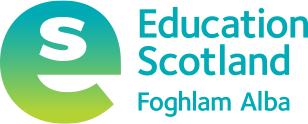Implementation guidance
This guidance aims to support leaders and practitioners to implement the Youth Voice Toolkit across a range of settings. To realise Article 12 of the UNCRC, it is important that children and young people are consulted on matters that affect them.
The term youth voice is used throughout this toolkit, and encompasses commonly used terms such as learner participation, or pupil voice. Youth voice refers to the participation of children and young people in discourse and decisions that affect them. We use the term youth voice to encompass the voices of children and young people up to the age of 25.
Youth voice activities involve gathering children and young people’s views in a representative way, and taking action as a result.
A youth voice structure includes any group of children and young people who come together in relation to youth participation and democracy. These groups will often discuss how to improve things within their school or community, and can focus on a wide range of themes.
Examples of youth voice structures include:
- pupil councils;
- youth forums;
- eco-committees;
- champions boards; or even
- whole classes who have a set voice focus.
Youth voice activities should be democratic and reflective of the wide range of experiences, circumstances, characteristics and perspectives of children and young people. This includes those attending school, or not in education. Youth voice is a continuing area of development across the country with the views of children and young people being essential in policy and practice.
'Young people have the right to be heard, and evidence shows that meaningful engagement has benefits for both individuals and public services. This is particularly the case in education, where there is considerable evidence from research that supports the view that addressing learner participation makes for effective policy making, enhances school life, and improves a range of outcomes for learners.'
